Madagascar 2020, part 9 (Antsirabe)
After the good night’s sleep in Antsirabe, my friend Sneža and I woke up fine and went down to have breakfast. Before starting with a day’s excursion to the environs of this city, I took a few photos around the complex at which we were staying and it all seemed a little unusual – as if I were in an English club, although I don’t know how things go in English clubs as far as guard dogs are concerned. Here they had a proper notification in connection with some “naughty dog.”
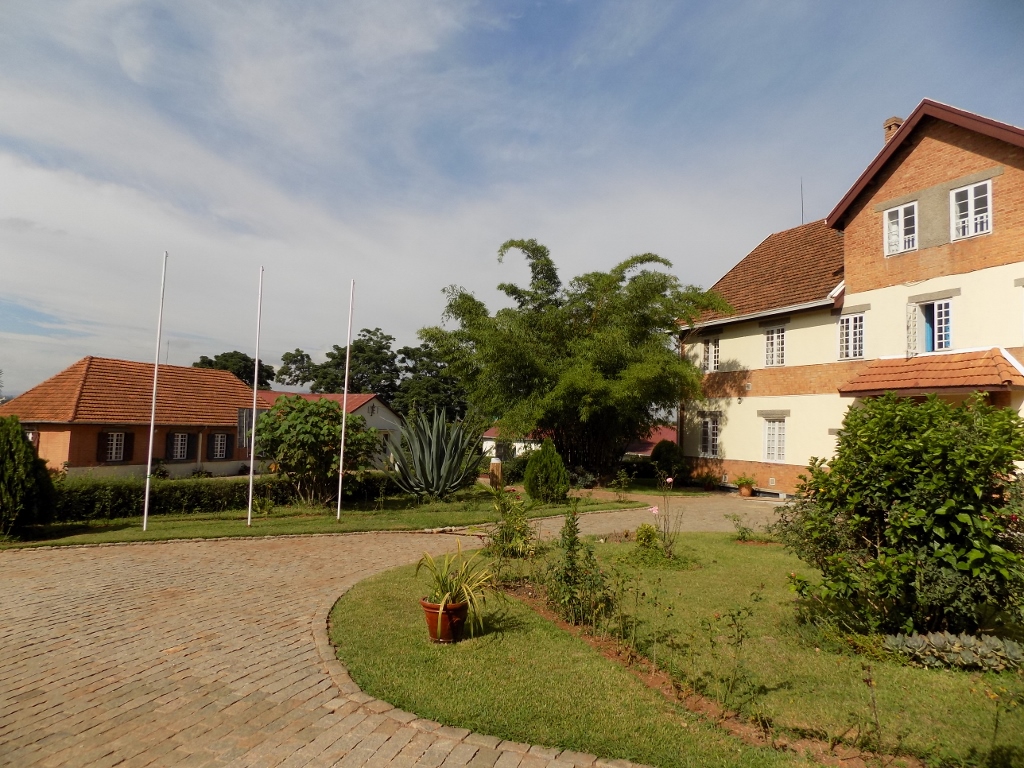 Interior part of the complex at which we were staying
Interior part of the complex at which we were staying
 You have been advised
You have been advised
Joking aside, as I’ve said in the previous text, this entire complex incorporates the Cross-Cultural Competence Centre managed by the Norwegian Mission Society which also has a section for the accommodation of passing visitors and this is an excellent place to stay here. The first Norwegian Lutheran missionaries came here at the end of the 19th century and the city was founded precisely by a Norwegian missionary in 1872.
There were two main reasons for the founding and the development of a town right here. The first one was that there were thermal water springs here which was very good for treatment and which is also revealed by the city’s name. Namely, tsira means salt, while be means big or very (the name of the island we had already visited, Nosy Be, means “Big Island” - nosy meaning island and be meaning big), which in effect translates Antsirabe as “very salty.” By the way, thermal baths were opened here at the beginning of the 20th century.
The other reason is a very pleasant and favourable climate for the respite primarily of the newcomers and colonisers from the oppressive heat that is present in most other parts of the island. Namely, Antsirabe is located at 1,500 m above sea level and the average annual highest temperature is around 23 degrees C. In January, this temperature is around 25 degrees C, but January is also the rainiest month.
On top of all of this, the land around Antsirabe is exceptionally fertile and the city is surrounded by numerous fields.
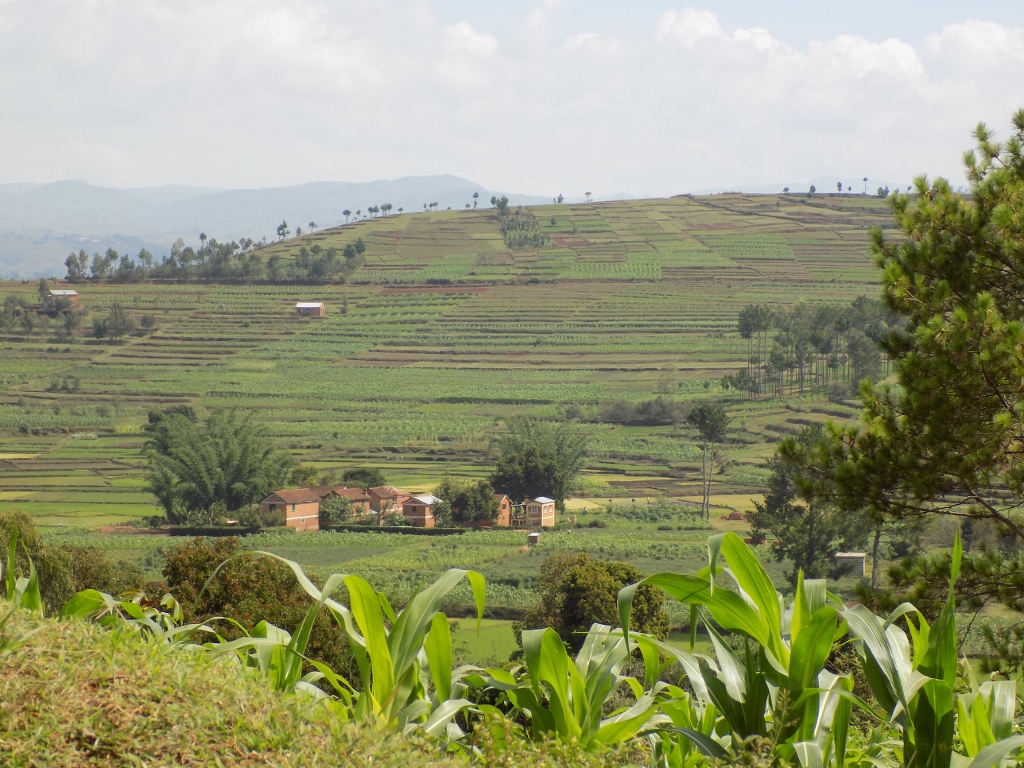 Surroundings of Antsirabe
Surroundings of Antsirabe
On this day we went for an excursion to a lake. There are two lakes near the city – Andraikiba and Tritriva lakes. The agreement was that we should only pass by the first one and go to the second one, since we did not want to spend too much time in the car, having in mind the previous days and the length of the drives.
In order to get to the lakes, one first needs to follow an asphalt road and already after several kilometres it is necessary to turn onto a dirt road that leads between numerous fields and scattered houses. This also gave us a great opportunity to see scenes of the daily lives of the local population.
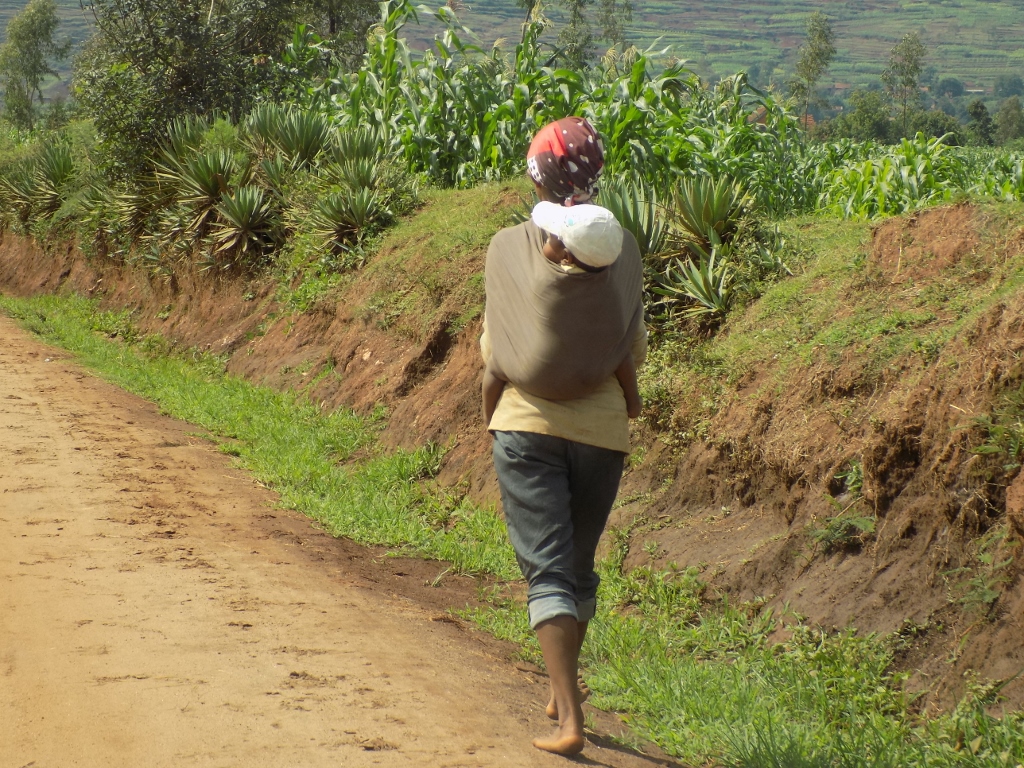 A nicely packed baby
A nicely packed baby
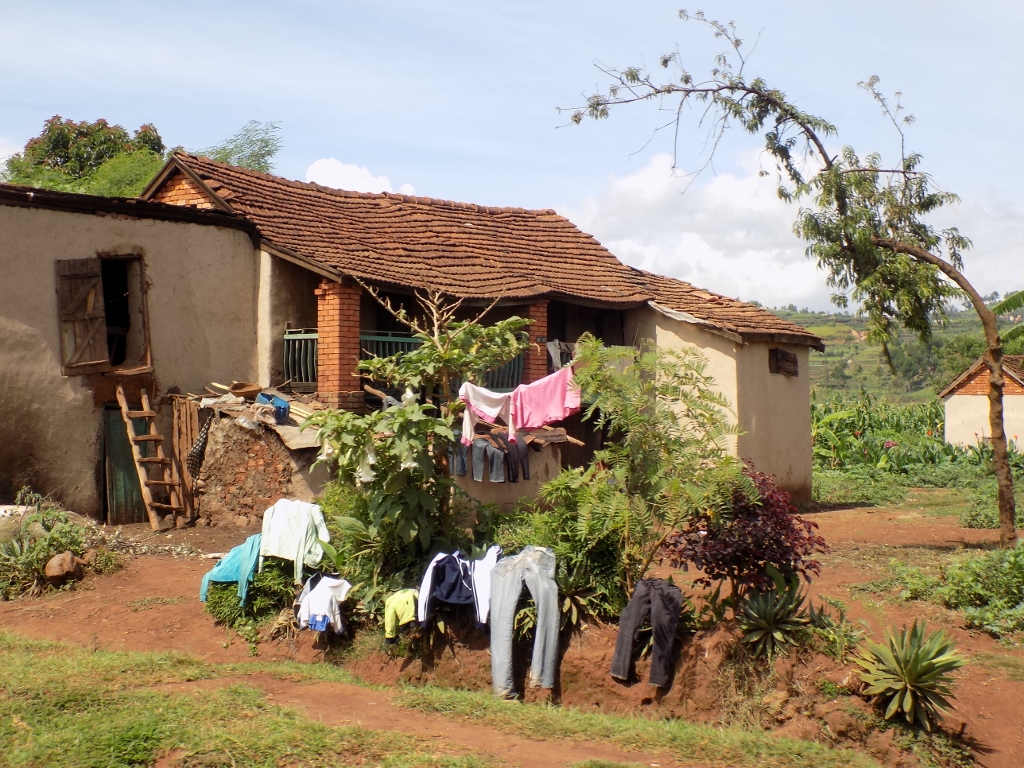 The laundry is drying
The laundry is drying
Our driver Rija explained to us that the Malagasy keep female zebus within their curtilage, so that they do not go to the fields to graze. Because of this it was possible to see very frequently people transporting large bags of grass or straw on their bicycles. The reason for this is that female zebus are very prized (they are significantly more expensive than the males). Since it seemed to me that stealing of zebus was a regular occurrence here, a loss of a female would constitute a major problem for a household and for this reason they are not taken far from home, but rather have the food for them delivered in these bags.
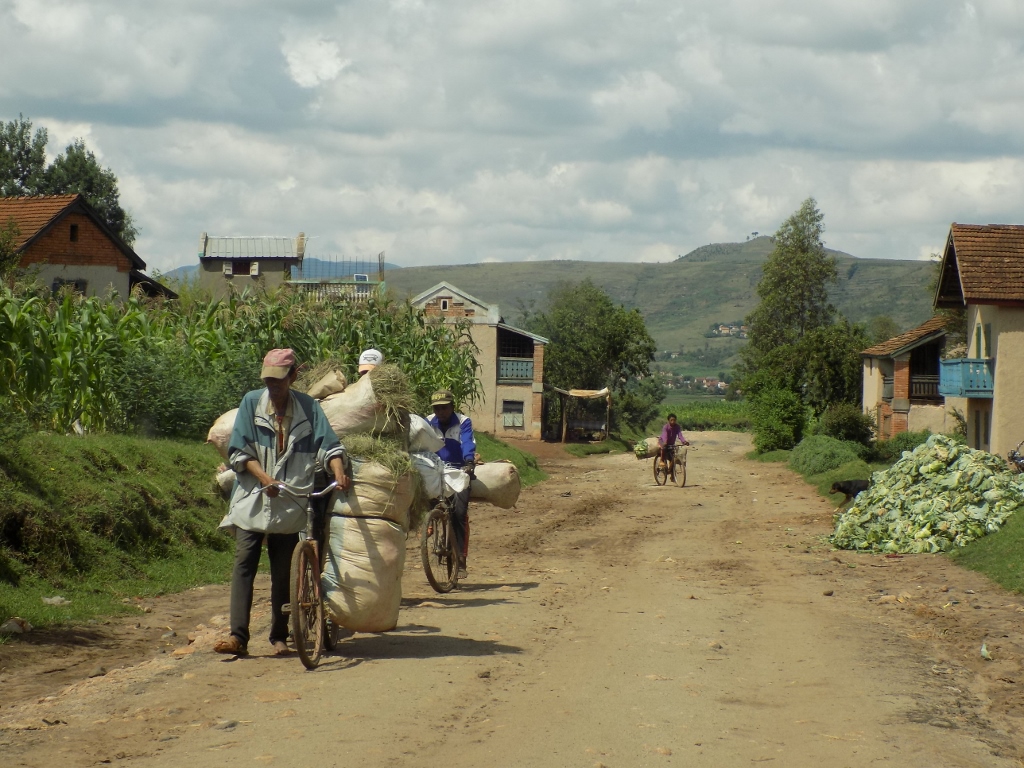 Transporting of food for female zebus
Transporting of food for female zebus
At some point the dirt road started to go uphill and then we came across a ramp and a hut around which there were several young men. We paid for the entrance tickets there and we also got a guide who was in fact one of those young men. He then got into our car and we all together continued for another few hundred metres. From the parking lot where we got out of the car there was a beautiful view at the surroundings.
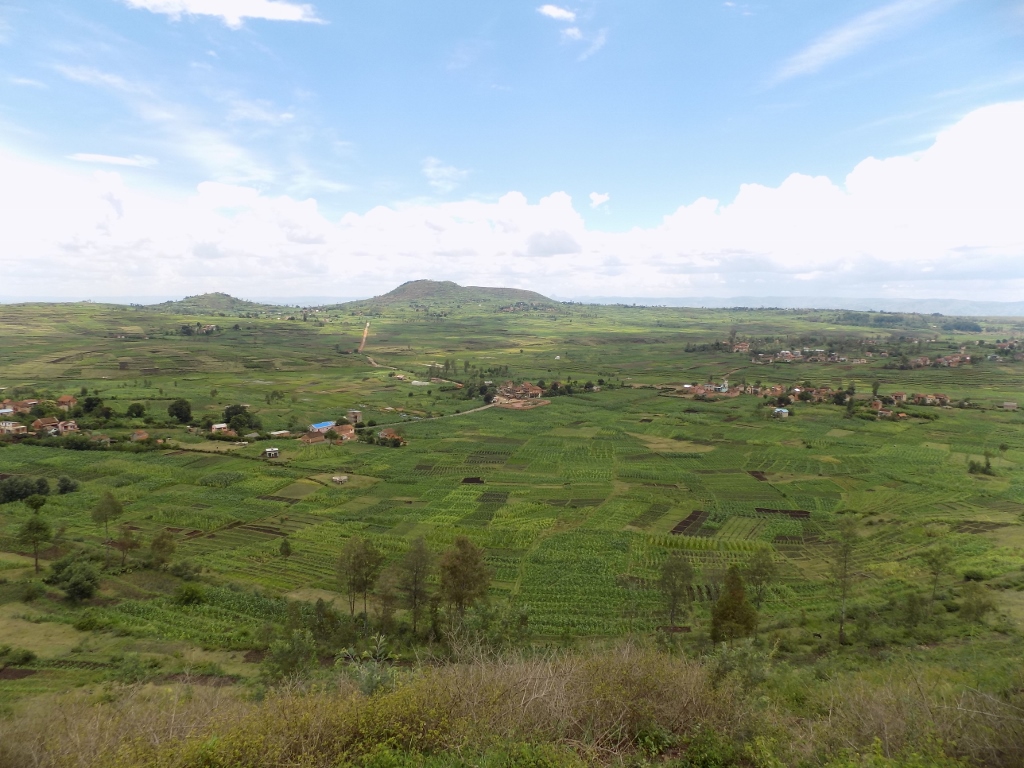 Landscapes close to lake Tritriva
Landscapes close to lake Tritriva
Although the plots were small by their size, I was truly impressed by how neatly they were arranged. Everything was planted extremely tidily.
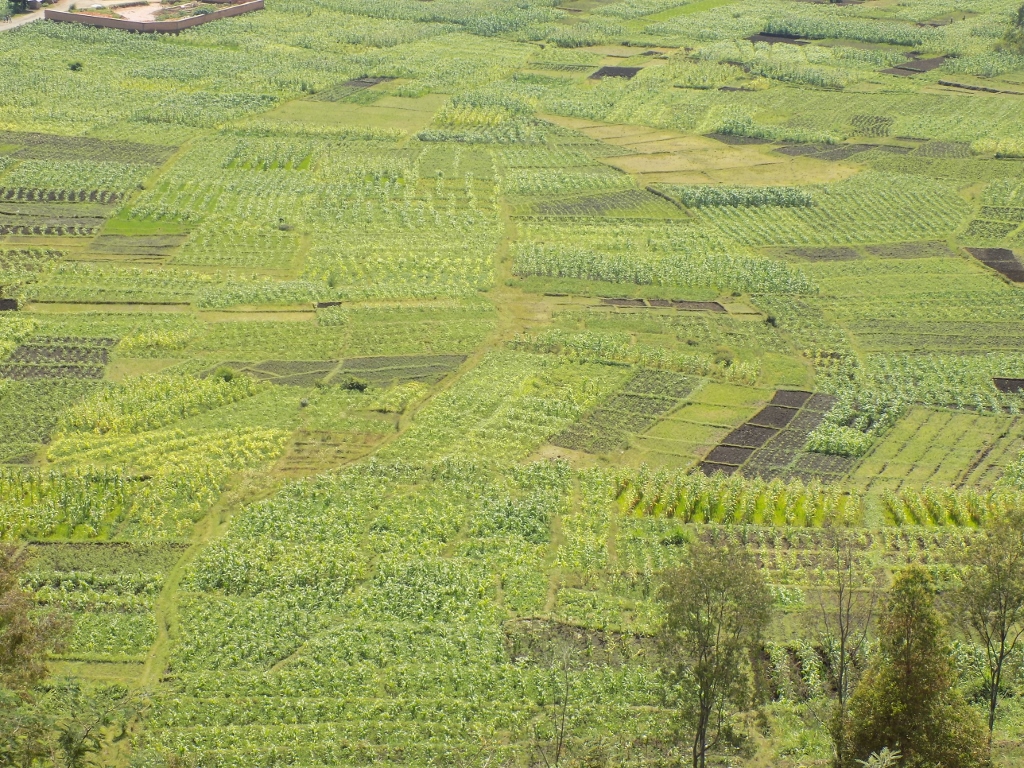 Fields in the surroundings of Antsirabe
Fields in the surroundings of Antsirabe
After this photo-shoot, we began with our walk to Tritriva Lake and around it following the guide. To start with, we went a little up to a small clearing from which we could have a good view at it and we were only bothered by some women selling souvenirs and constantly crowding up around us. Taking into account that we were the only visitors at the lake at the time, I found it a little odd that several of them were sitting there waiting without any idea whatsoever if anybody would come at all. Be as it may, they were rather insistent with those offers of theirs and the only way to get rid of them was to ignore them. I generally do not like to ignore people, but since I was not ready to buy a bunch of some, for me, pointless souvenirs and they were standing in the way of my doing what I came there to do, I felt I had no choice. On the other hand, the view at the lake was truly impressive.
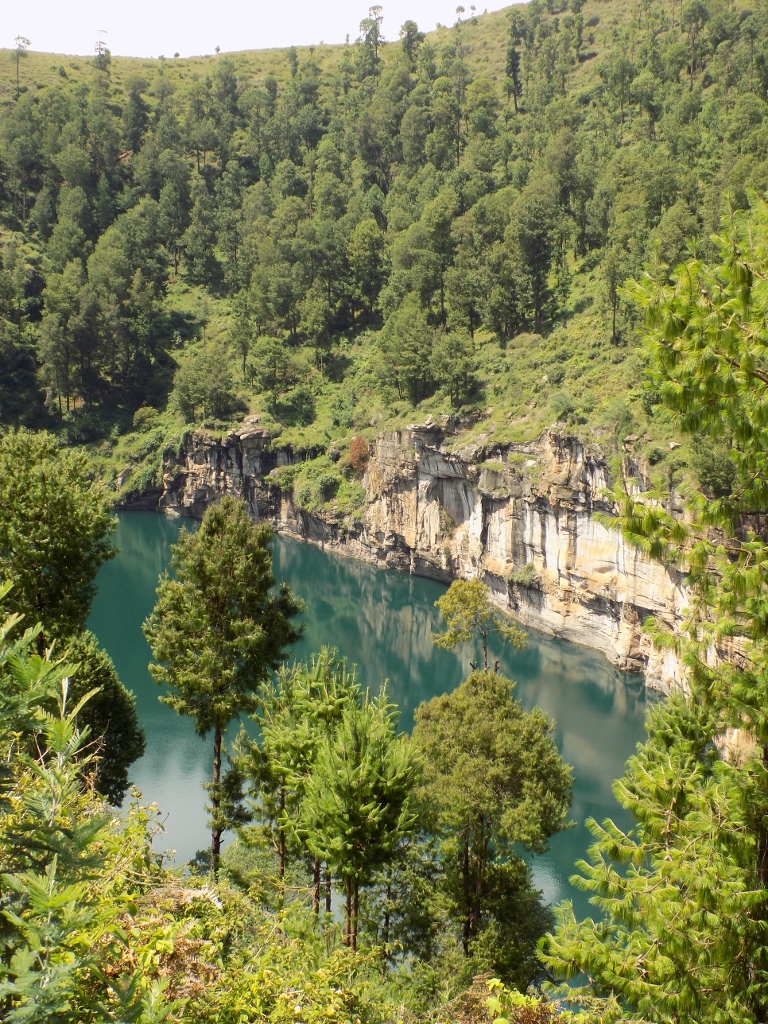 Tritriva Lake
Tritriva Lake
Tritriva Lake is located at 1700 m above sea level and it fills up a crater of a volcano that extinguished a long time ago. The guide told us it was 146 m deep and that even Jacques Cousteau had dived there in order to establish the exact depth. The guide also told us that we could swim in the lake if we wanted to, but the only requirement was that we had not eaten pork beforehand since this was “fady.” Namely, “fady” is the term used to mark different traditional prohibitions and taboos, and this is a frequent occurrence among the Malagasy. However, although we had not eaten pork before coming to the lake, the two of us were not particularly interested in swimming here, so we only had a nice walk around the lake. This walk “around” the lake also included descending down to the lake and certainly also climbing back up on the other side. Along the way, we passed by some very pretty flowers.
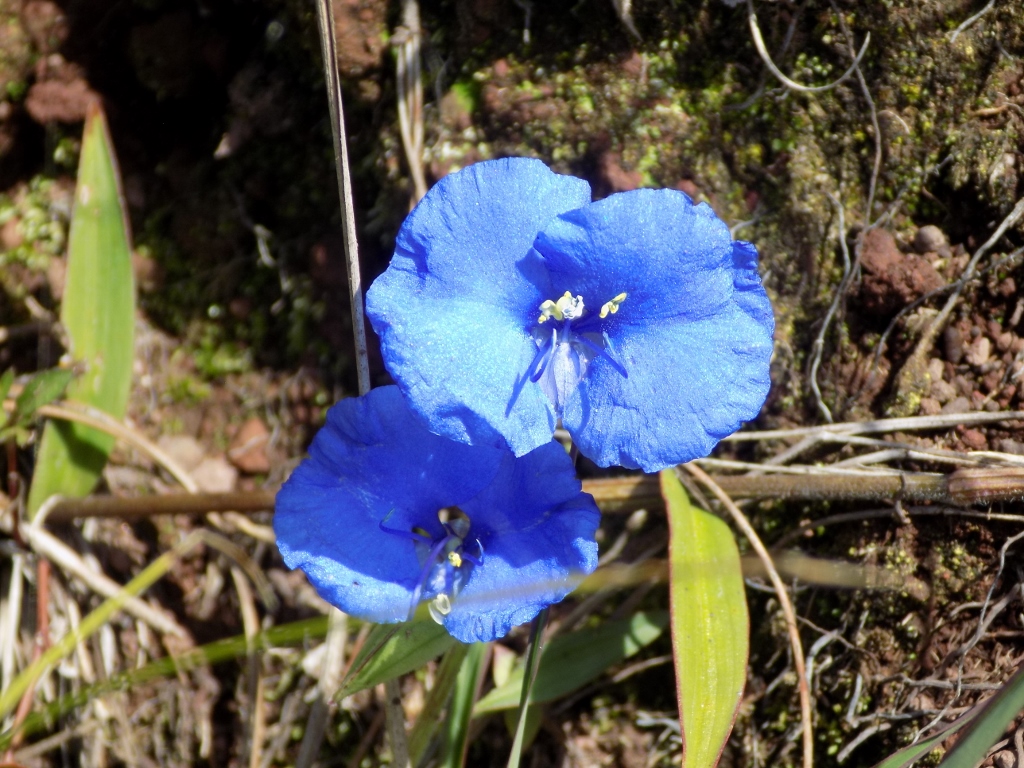 Commelina mascarenica
Commelina mascarenica
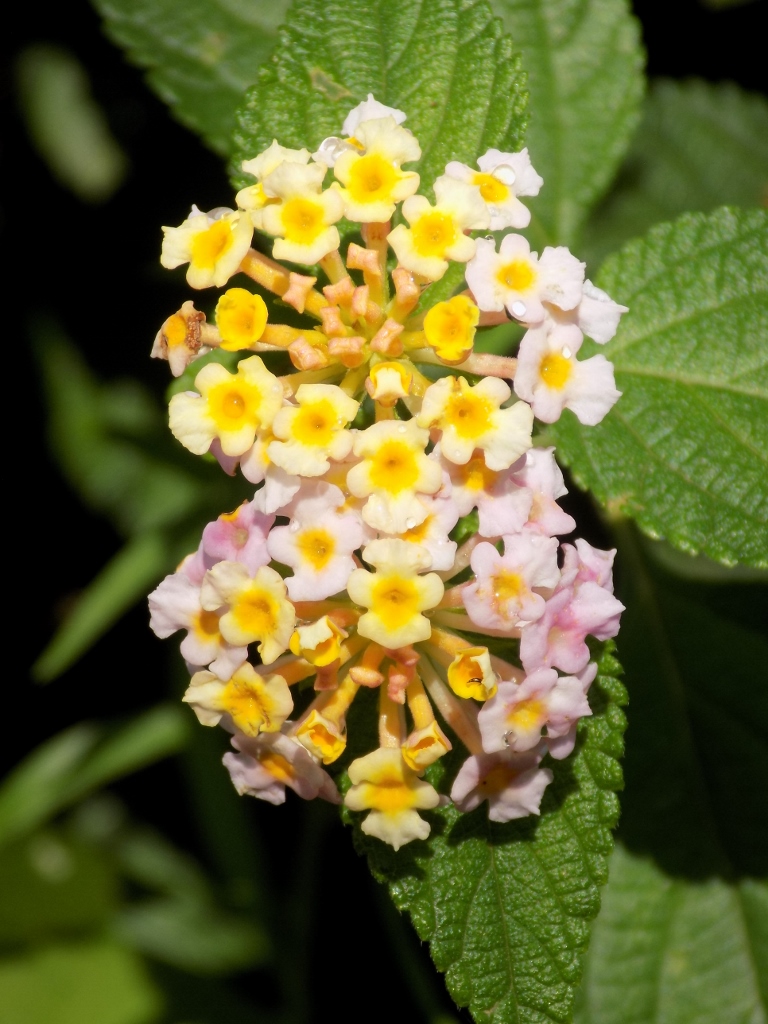 Common lantana
Common lantana
When it comes to the common lantana (Lantana Camara), the guide pointed out that this was a plant with very important medicinal properties – it is used with stomach pains. Generally speaking, during our walks in nature with guides, the Malagasy often emphasized the medicinal properties of different plants we came across which are used in traditional medicine. I found this a little unusual, I guess because it is so common in Serbia to use many different plants in traditional treatments, but then again perhaps other visitors were more prone to drugs bought in pharmacies and thus the plants and the nature seemed quite exotic to them.
Be as it may, I also noticed a couple of birds here. These were a red fody (Foudia madagascariensis) in a tree and a Madagascan grebe (Tachybaptus pelzelnii) which swam leisurely around the lake.
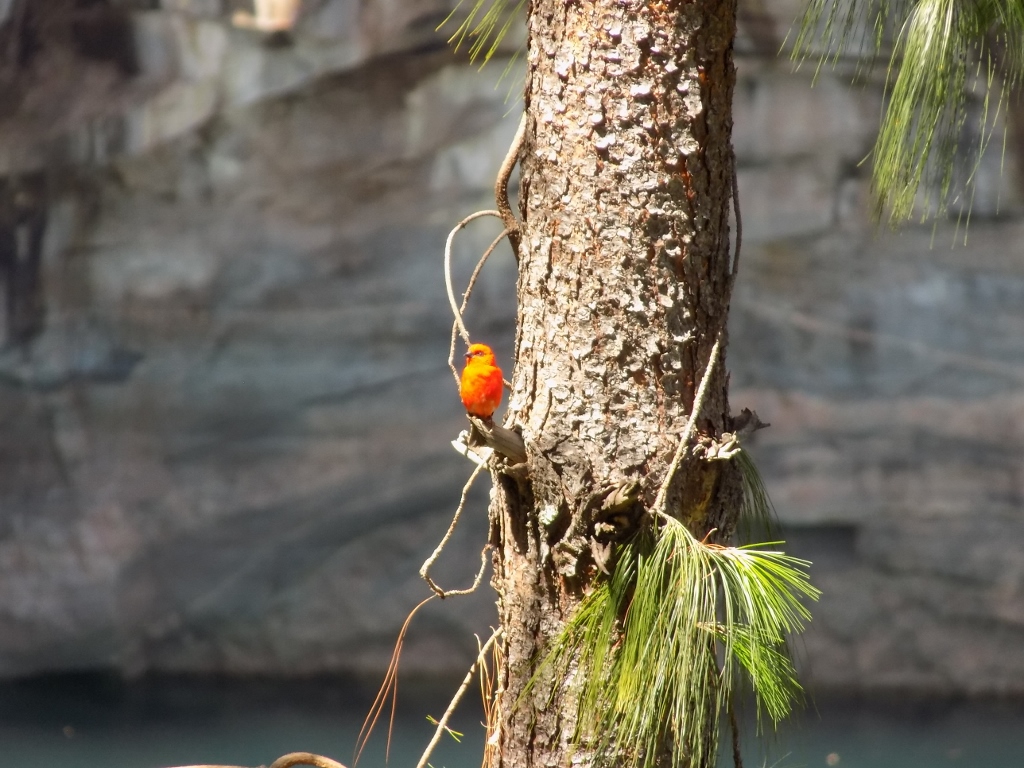 Red fody
Red fody
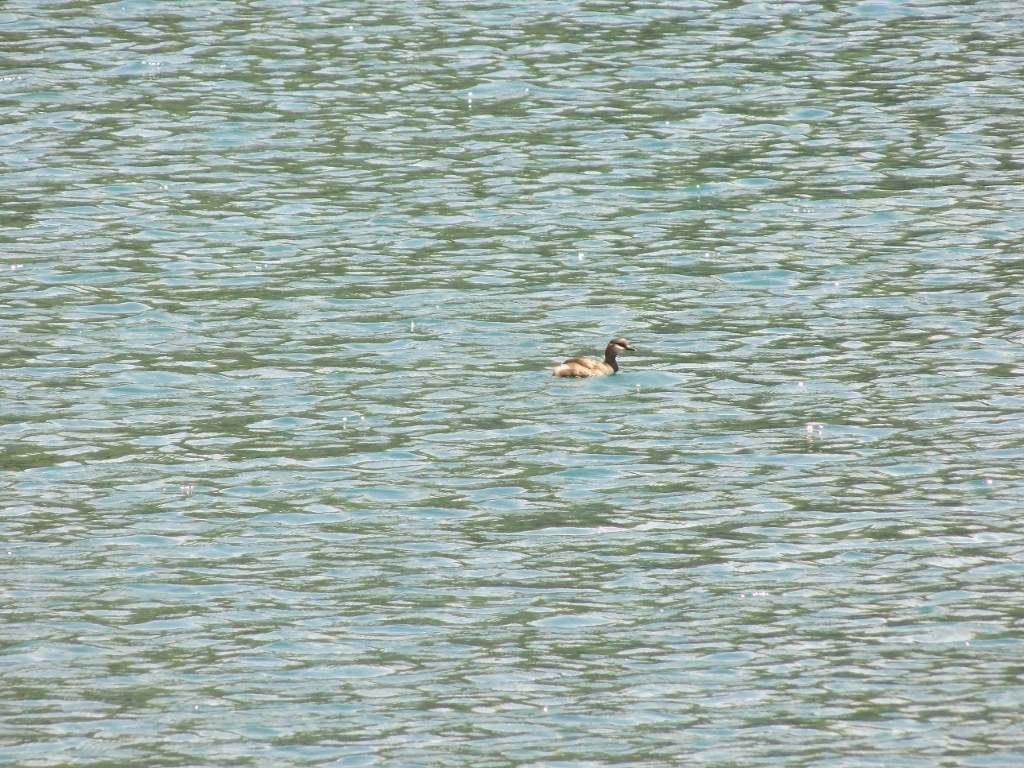 Madagascan grebe
Madagascan grebe
Along the way, we also passed by a rocky section covered in vegetation where it was possible to see soot clearly, while some names and markings were written on the rock. The guide told us that the lake was believed to be sacred, there were legends about a couple in love who had problems about that, so they threw themselves into the lake because that was the only way they could be together forever, etc., so the local population comes here from time to time and offers sacrifice. As for the religion and the beliefs, the books and the internet provide contradictory data – some say that more than a half of the population belong to the traditional belief systems, while the others give a substantial “advantage” to the Christian religion and according to them as many as 80% of the Malagasy are Christians. From my experience, it is not that important what people say that their “official” belief is when censuses are conducted, but rather what they practice. These who come to this place certainly believe that such rituals can help them.
While we were leisurely descending towards the lake we could hear some beautiful birds’ songs, but they seemed to have quieted down by the time we got to the end of the dry section of the volcano’s crater, so there were perfect calm and silence there.
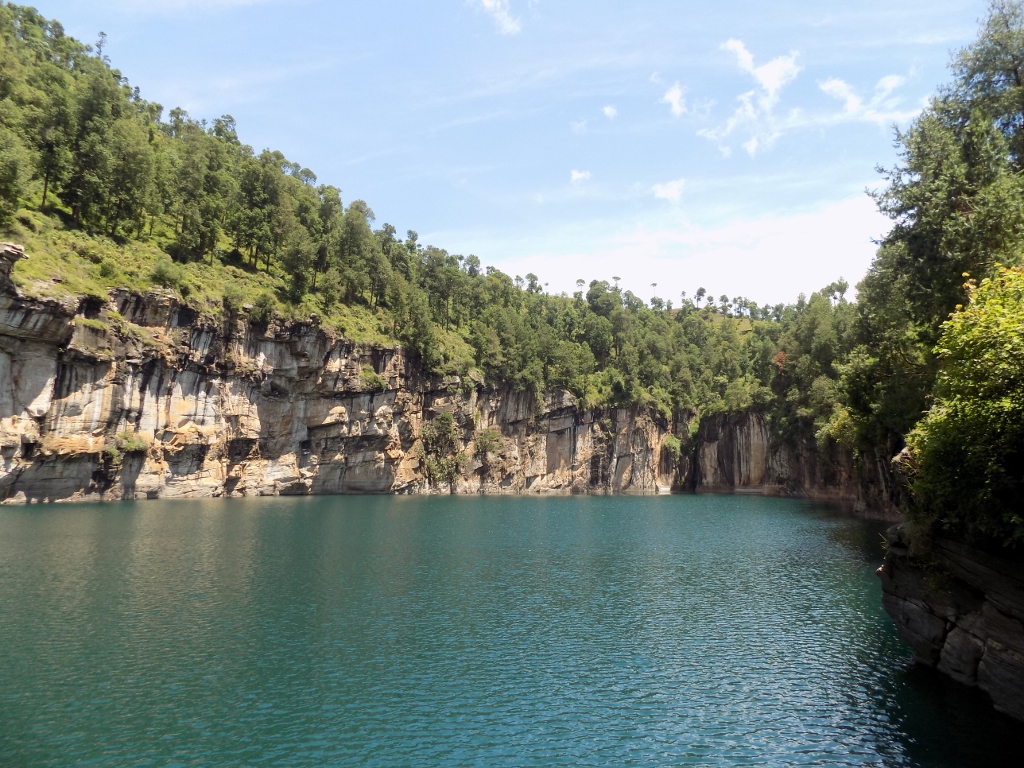 Tritriva Lake
Tritriva Lake
Beside the lake, we sat on a rocky plateau and we took some photos there. Then I also walked along a path that led by the lake in order to have an even better view.
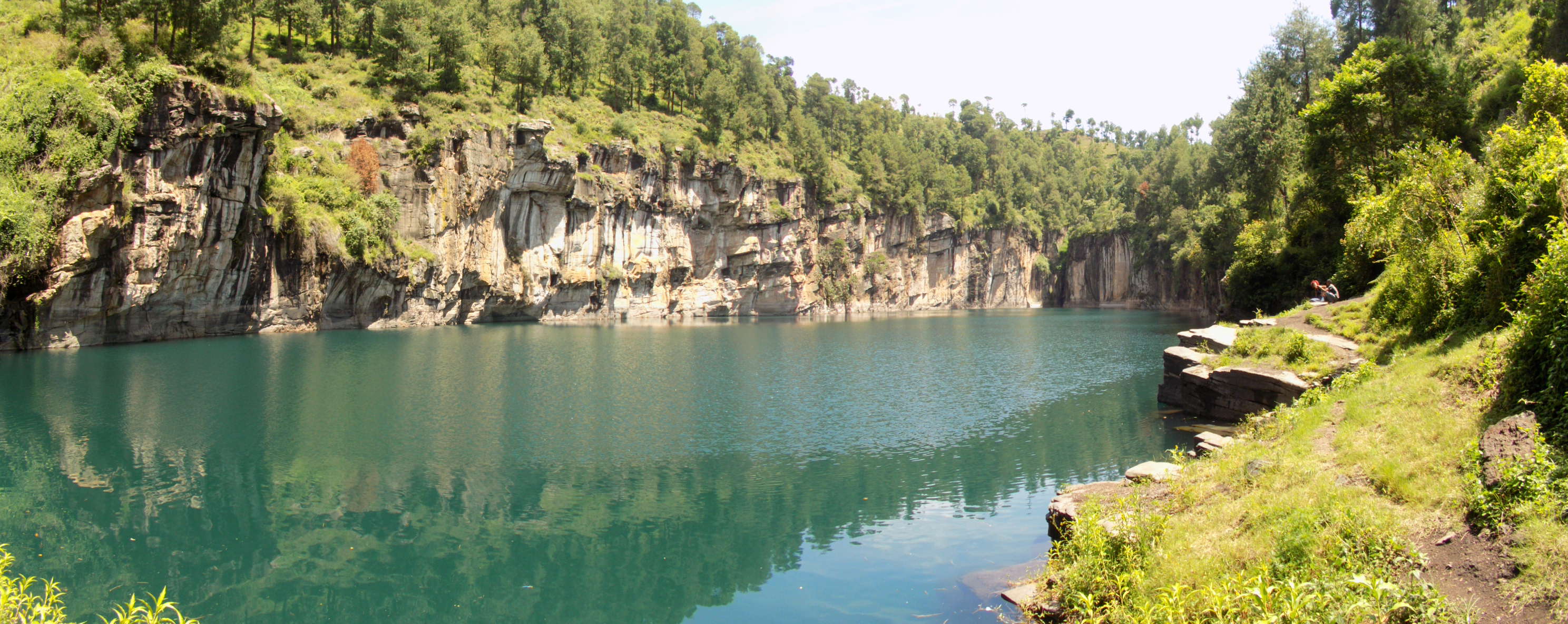
There was also a tombstone which said that in 1943 an unfortunate young man came here to swim and he was never seen again. However, on this beautiful day, with the perfect temperature, fantastic colours, the nature at its best it was enough for the two of us to be filled with positive energy and content for being in such a stunning place.
I also took a couple of photos of the guide there by the lake and then soon, after we climbed up a little bit and came to a fine rocky viewpoint, he reciprocated.
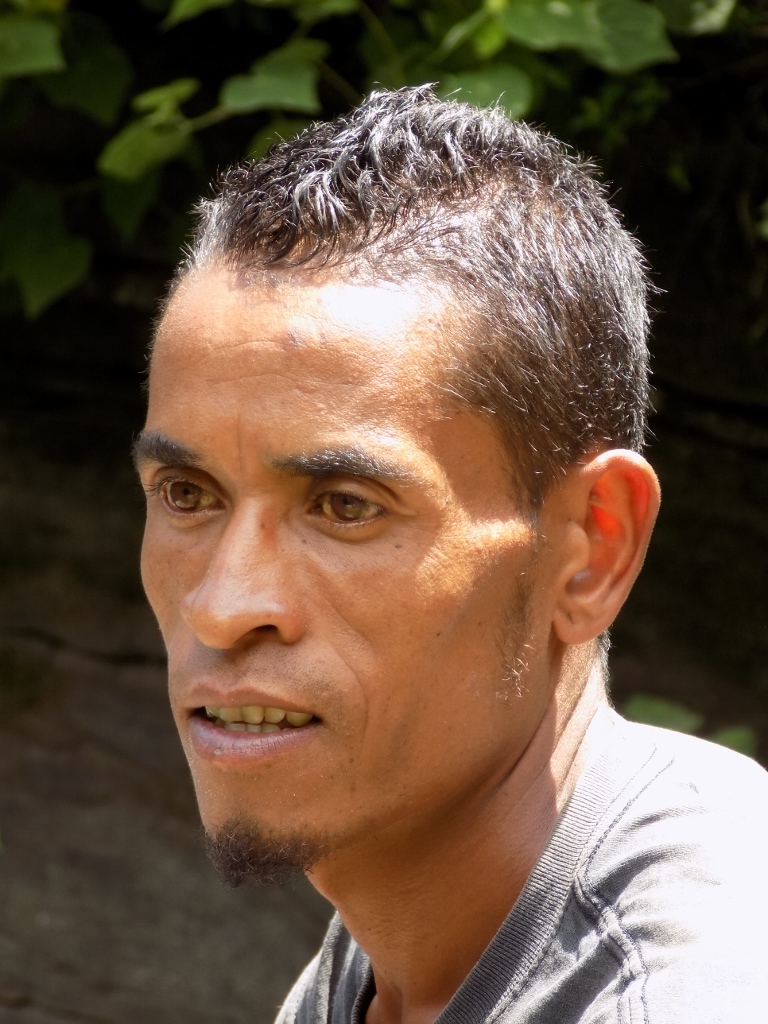 Guide by Tritriva Lake
Guide by Tritriva Lake
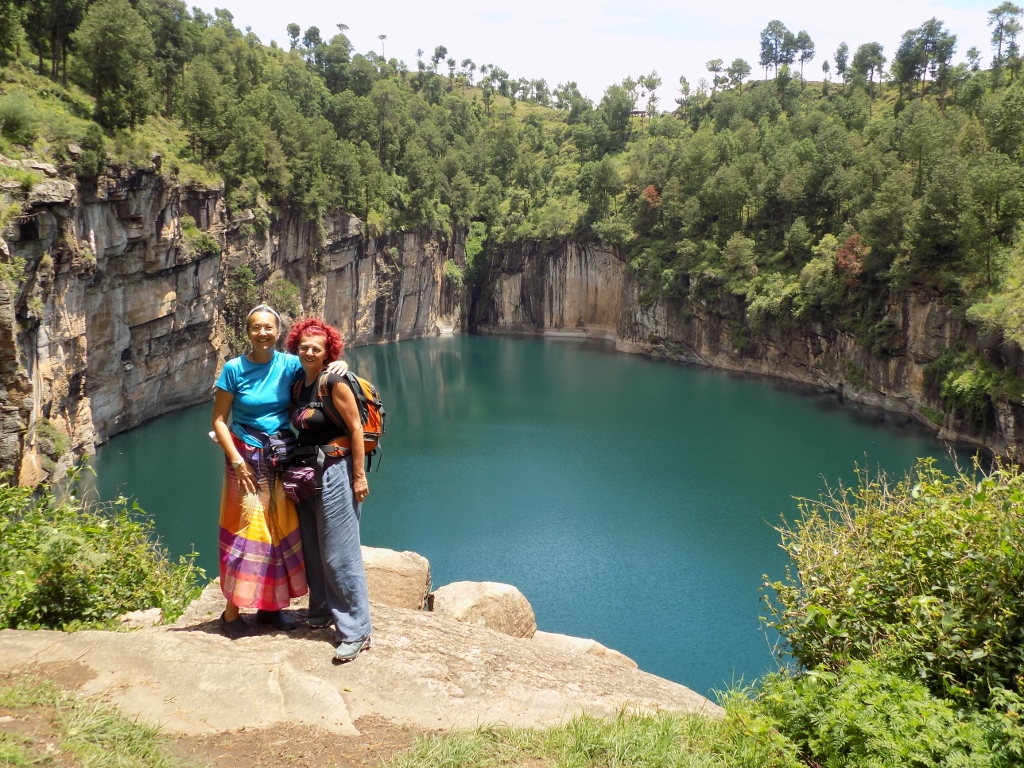 The two of us at the wonderful viewpoint above the lake
The two of us at the wonderful viewpoint above the lake
Going up the path that led through the forest and between dense shrubs, the guide drew our attention to a plant and its fruits – this was the passion fruit the fruits of which were still unripe. It felt very exotic to walk beside some vines, almost weed-like, that bring such tasty fruits.
Also exotic, but in quite a different manner, seemed a spider known for its web the threads of which glitter with golden colour when lit by the Sun. This spider, red-legged golden orb-web spider (Trichonephila inaurata madagascariensis), can be seen in the photo below.
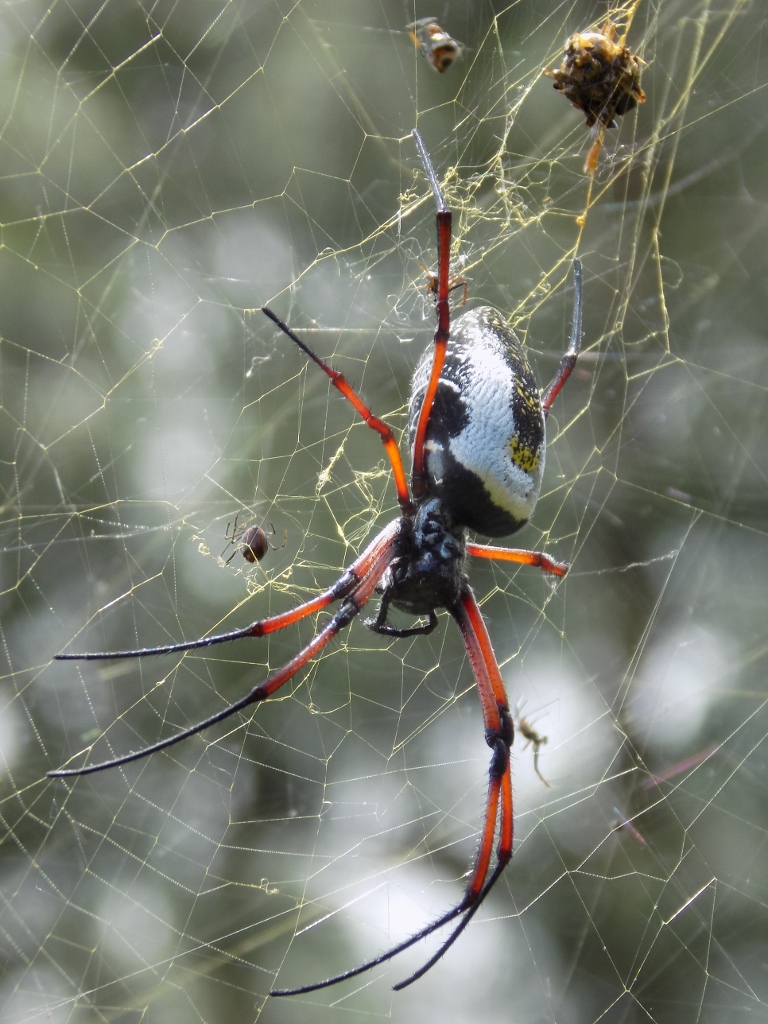 The spider that produces golden threads
The spider that produces golden threads
Along the way we frequently looked back to see Tritriva Lake again. It was beautiful from whichever angle one looked at it.
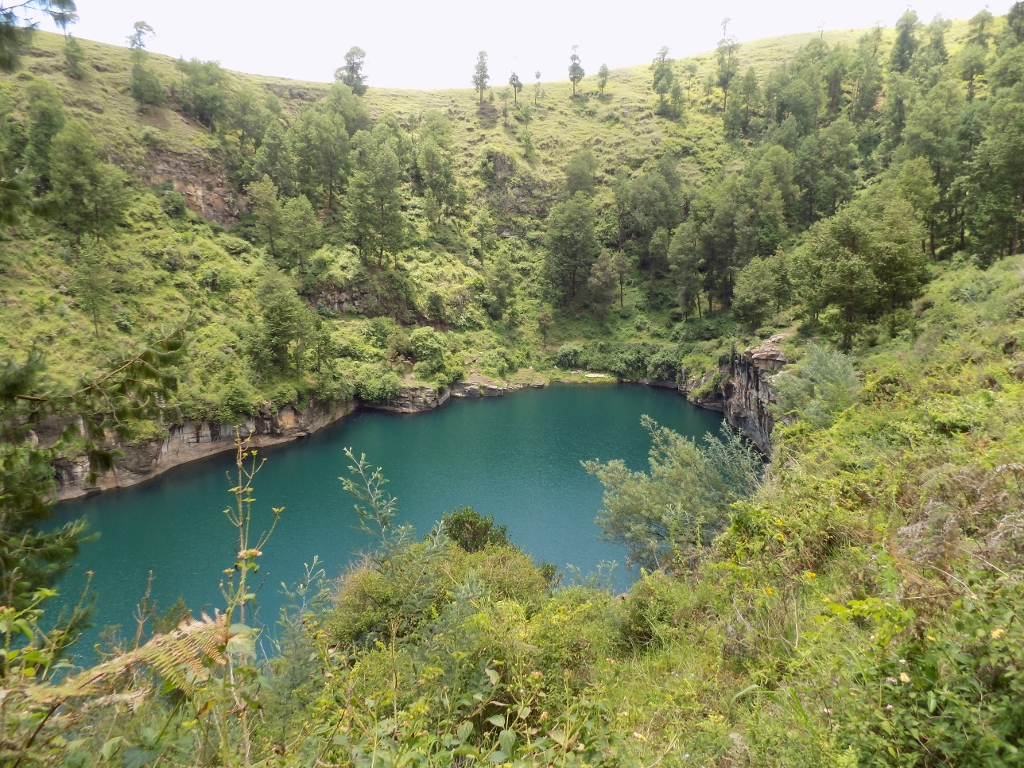 Tritriva Lake
Tritriva Lake
After some time we got back to the top of the crater from where we started with our tour.
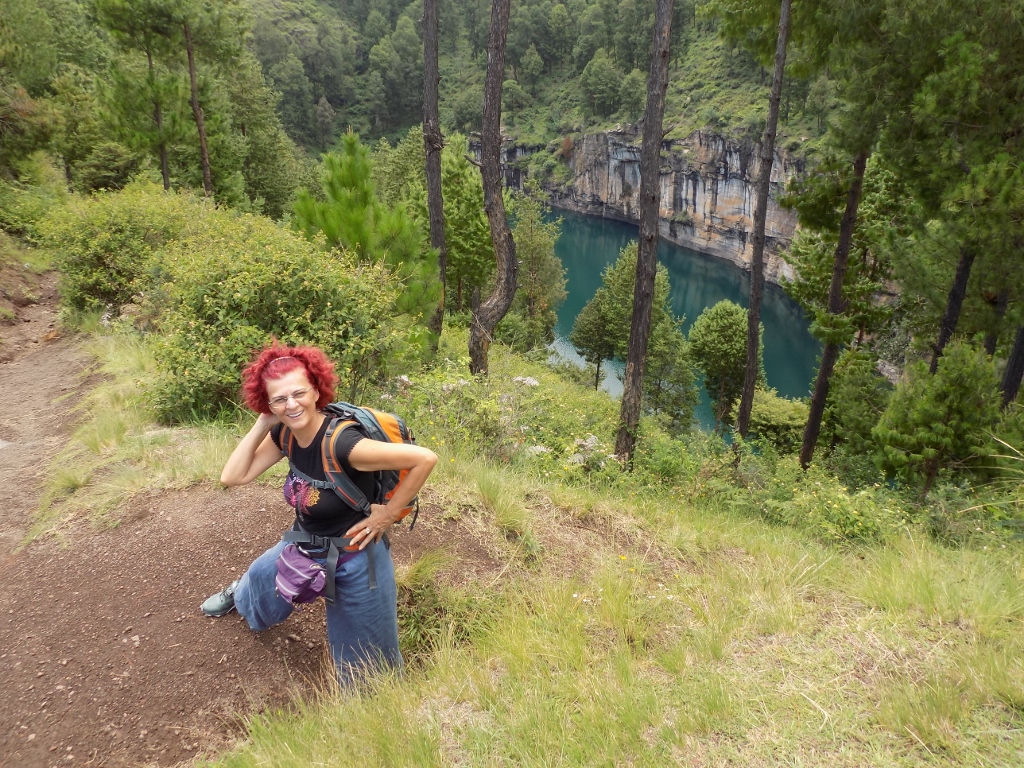 Sneža and Tritriva Lake
Sneža and Tritriva Lake
Having brought back our guide by car to the hut where we had bought the tickets at the beginning of our visit, we headed back to Antsirabe, again watching the daily life of the local residents.
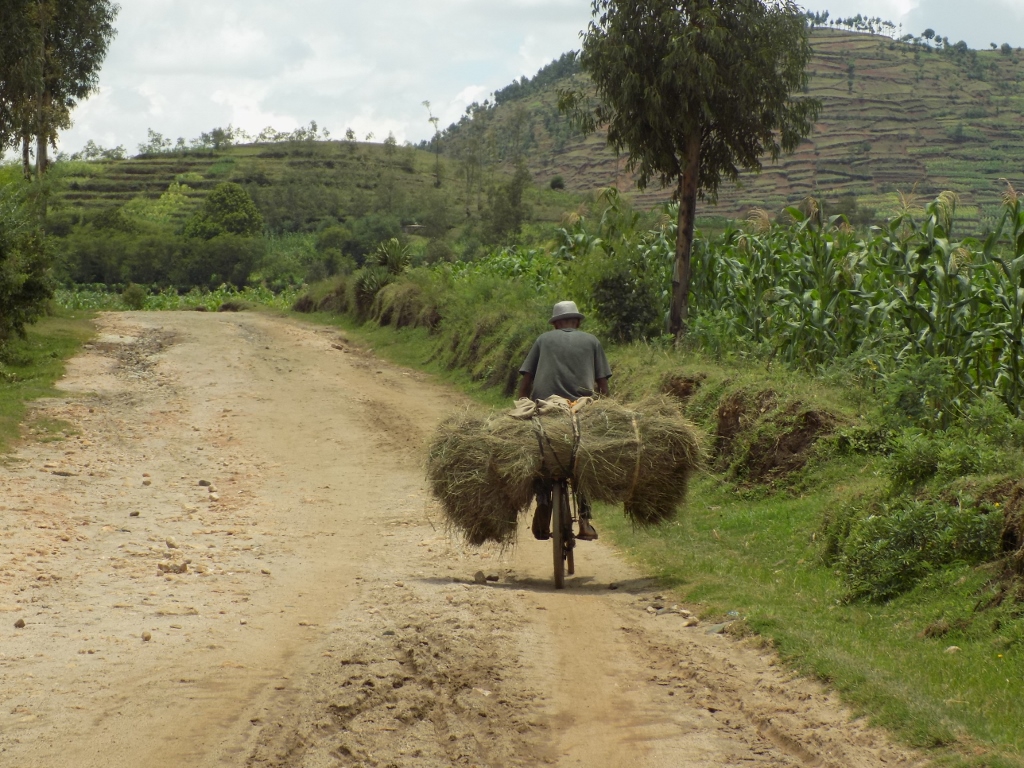 Grass for the female zebu
Grass for the female zebu
However, no matter how attractive and abundant the nature may seem, the life here is certainly not easy. Thus, at some point we came across a woman who I believe carried on the top of her head a large bag of charcoal. Namely, probably the most frequently used fuel in households, at least in the interior of the country, is charcoal and during this entire journey, especially later, we would often see large bags covered in black dust which meant that they contained charcoal. In some parts of Madagascar there are large areas with forests of eucalyptus trees since they grow fast and their timber is used for the production of this type of coal.
What made this woman additionally interesting to the two of us was her t-shirt, the type that was the most frequently seen piece of clothes, at least during our stay on Madagascar. As we found out later, these t-shirts had been given away as a part of an election campaign of their current president.
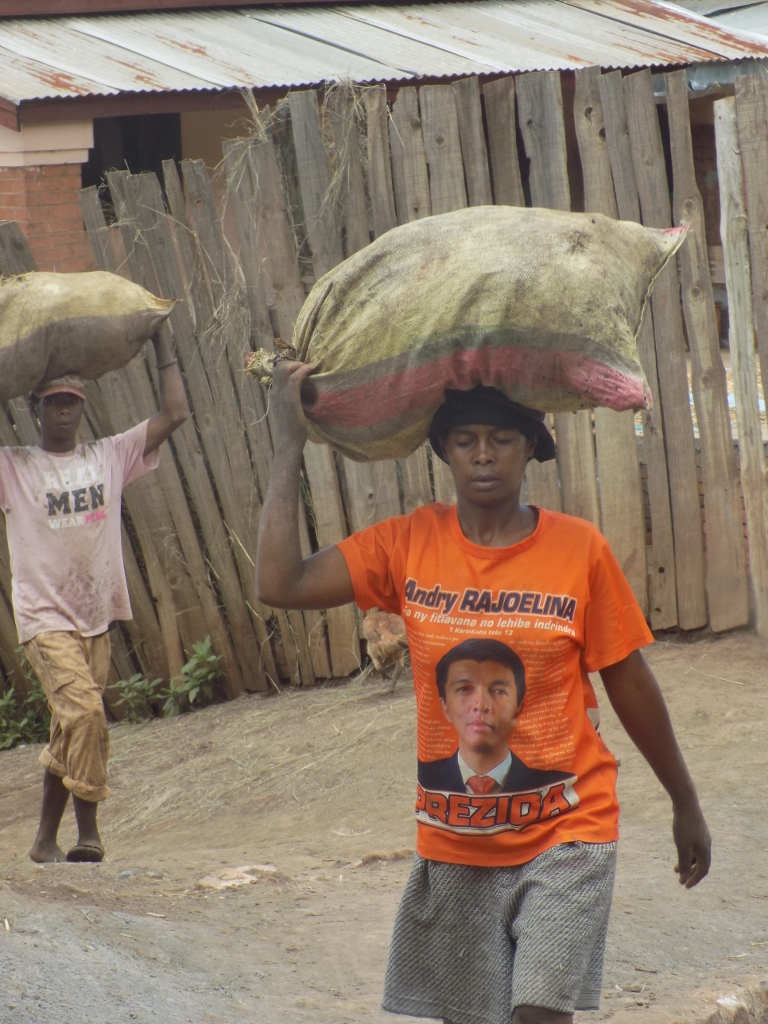 Hard-working woman
Hard-working woman
Soon we returned to the city and there on a very steep section of the road we came across a small group of people who apparently with a lot of effort pushed a wooden cart that was piled with some goods which were obviously very heavy and these people had a lot of difficulty fighting the weight of the cargo, the steepness of the road and the gravity. The life on Madagascar is often not easy at all.
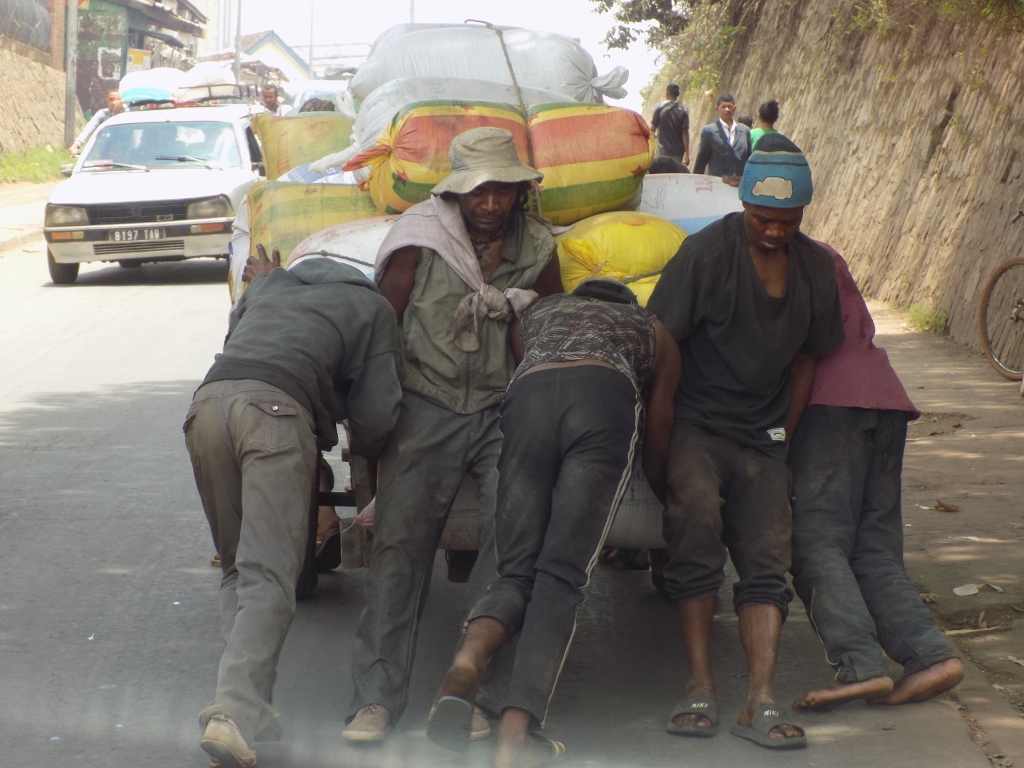 Pushing a heavy cargo uphill
Pushing a heavy cargo uphill
We agreed with our driver Rija to go our separate ways in order to have lunch, after which we would get together again and continue with some minor sightseeing around the city. To start with, Sneža and I went to a local supermarket and there I was very pleasantly surprised when I saw some notebooks. (N.B., I am from Serbia and Novak Đoković is from Serbia.)
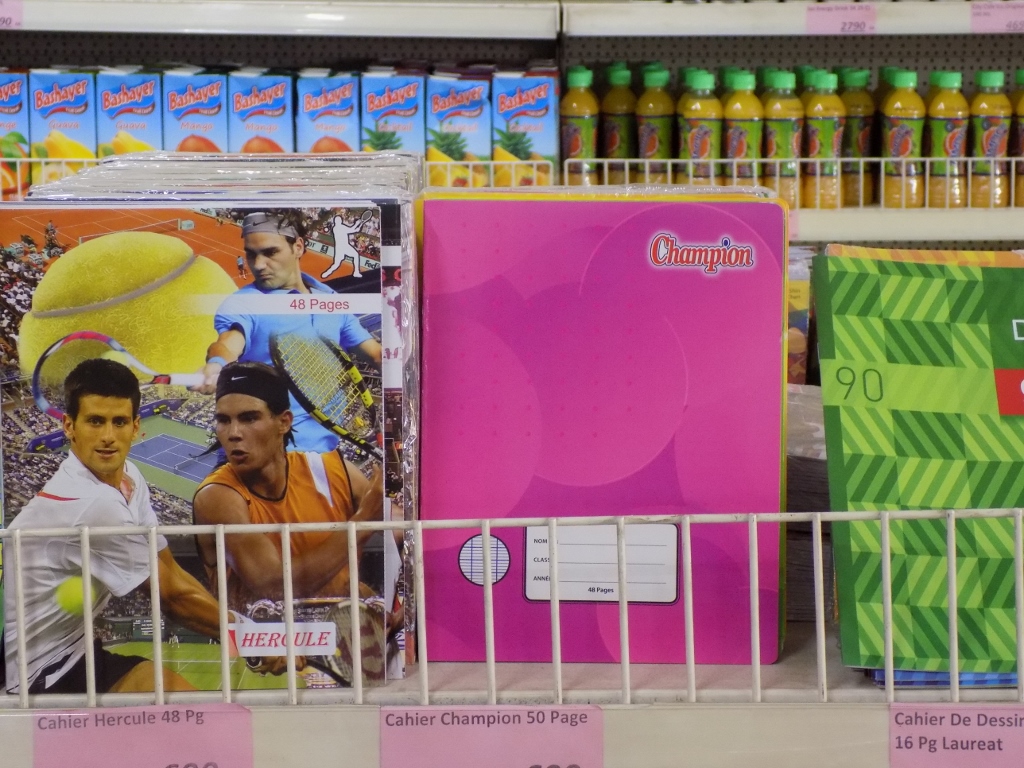 Notebooks on Madagascar
Notebooks on Madagascar
Talking about sports, let me say something about that. Like in the majority of the countries in the world, football is the most popular sport here, but Madagascar only occasionally manages to score some solid points on the international scene. However, what they are really good at and so much so that in 2016 they were the world champions is – pétanque. Still, this was not their only success in this sport and the Malagasy have been on the top of the game for years, having won gold and other medals both in male and female versions of the sport. Good for Madagascar!
After the supermarket we went to the restaurant in which we had had our dinner the night before since it was rather close to our B&B in Antsirabe. I ordered again a portion of the Malagasy dish called Mine Sao, this time with chicken, and along with fish and sea food this would be my favourite food until the end of the journey and the most frequently ordered dish.
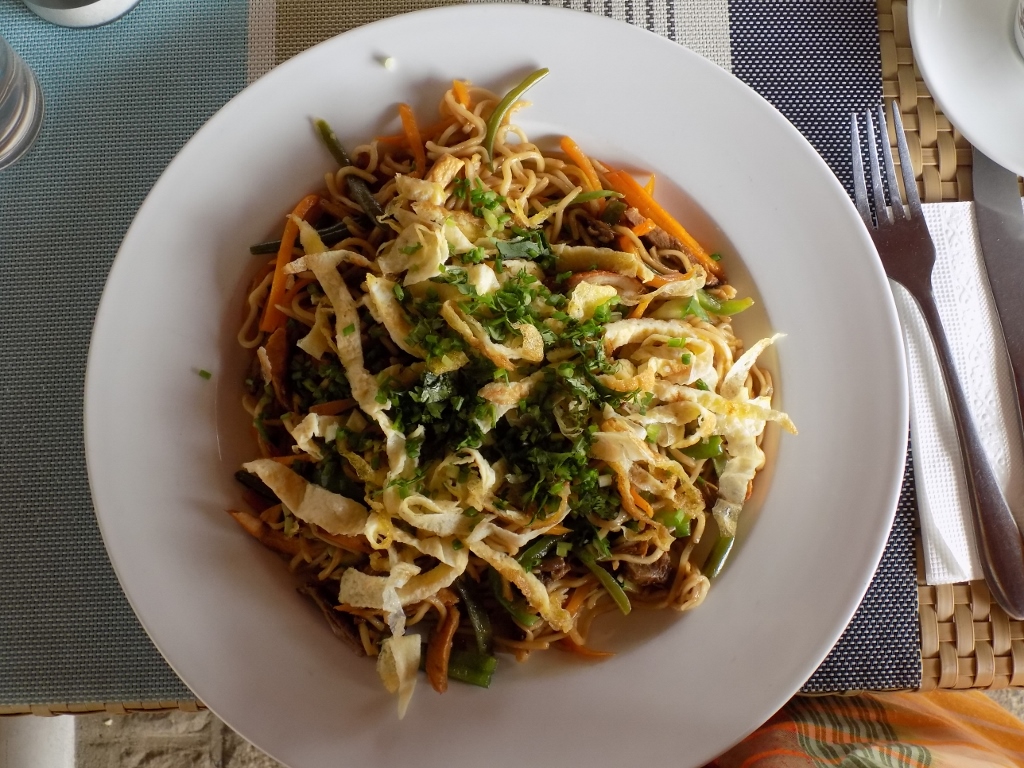 Chicken Mine Sao
Chicken Mine Sao
By the time we had finished with our lunch, it was beginning to rain. Still, practically right next to the restaurant there was a gem market, where we simply had to go. Admittedly, I was personally not too interested in shopping since earlier in my life I had already bought numerous pieces of crystals, so I no longer tend to buy them although I certainly enjoyed looking at some of the pieces here. On the other hand Sneža enjoyed through and through. As she was finishing with her shopping, the rain stopped for a while and then without any problems we walked back to our bed and breakfast. Later, we met up with Rija again and started with our afternoon “sightseeing,” but by this time it rained really heavily.
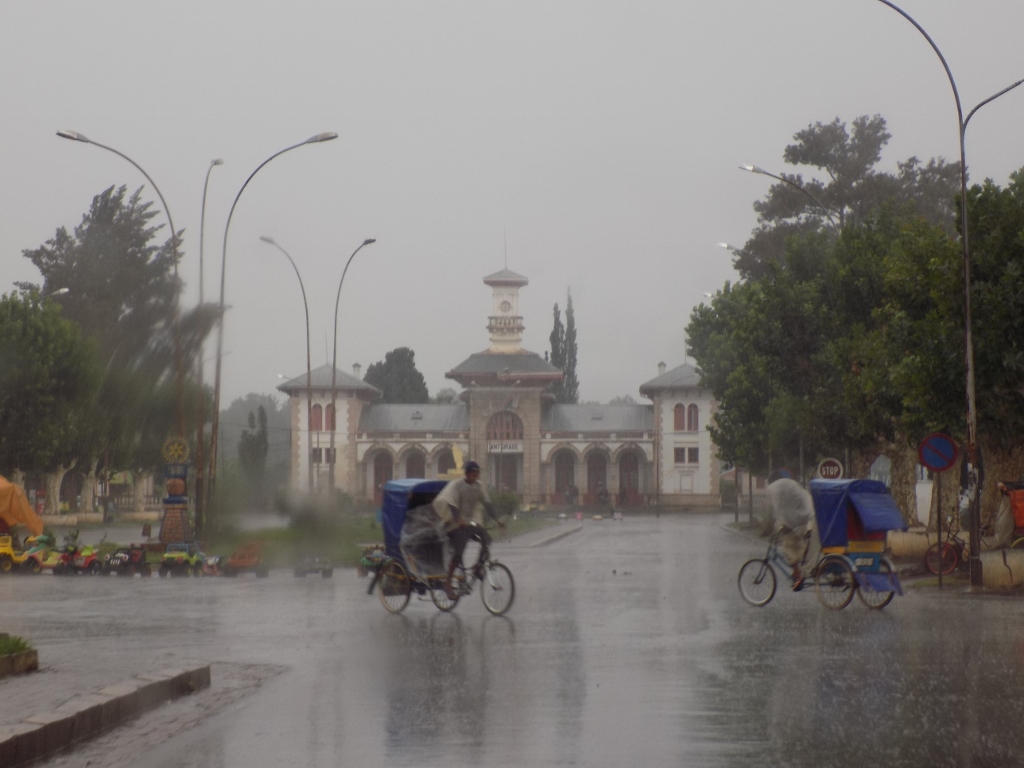 Grand Avenue and the railway station in Antsirabe while it is raining
Grand Avenue and the railway station in Antsirabe while it is raining